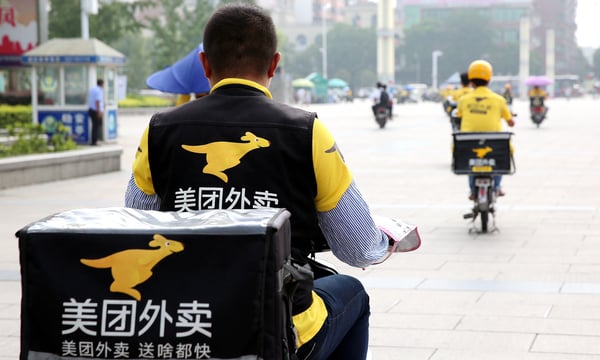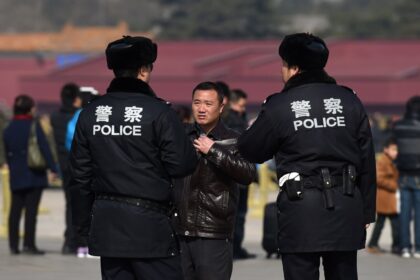China Power | Society | East Asia
As the country’s takeout market has swelled, so have the numbers of unregulated, unsanitary restaurants
Takeout riders zip into a Beijing junkyard, dodging piles of twisted metal, sodden cardboard, and junked bicycles. They collect pig trotter soup from a cramped, filthy kitchen and deliver it to users of one of China’s gigantically popular food delivery apps.
This scene was captured by reporters from China’s state broadcaster last year, causing outrage over the safety of the food eaten by the hundreds of millions of people that use takeout apps every week. This is far from a one-off issue and highlights regulatory gaps and structural problems in the hypercompetitive takeout industry.
The soup-vending junkyard was a “ghost kitchen.” Simply put, that’s a restaurant that only exists on delivery platforms. The business model exists around the world and isn’t inherently dodgy. But the nature of these kitchens – often hidden from public view in unusual locations – makes oversight much harder.
The State Administration for Market Regulation (SAMR) has recognized this. This year, it named ghost kitchens a significant challenge that had emerged during the soon-concluding 14th Five Year Plan period, though it did say it had “comprehensively managed” the issue. This month, the SAMR released a draft of beefed-up rules for the business that aim to curb the ghost kitchen problem.
While the ultimate responsibility for safeguarding food safety lies with market regulators, in practice, the government relies on the apps to check that they’re dealing with legitimate businesses and whether standards are being upheld.
But media reports over the years have repeatedly shown how the platforms haven’t lived up to their responsibilities when it comes to ghost kitchens. The Beijing junkyard incident is typical. In August this year, the authorities revealed that takeout giants Meituan and Ele.me hadn’t double-checked the business’ information and had also failed to notice their drivers were picking up food from a different address than the one given when the business registered.
The backdrop to the ghost kitchen problem is the takeout sector’s rapid growth and the price war that kicked off in the industry this year.
China’s takeout market has exploded over the last decade or so. The industry was worth nearly 1.3 trillion yuan last year and is set to grow another 10 percent or so this year. Legions of scooter-mounted takeout drivers, most clad in the blue or yellow livery of the market’s main players, fill China’s streets. Reportedly, Meituan has over 7 million drivers.
The industry has long been brutally competitive, with platforms squeezing restaurants and riders to eke out a competitive edge. But it has become even tougher recently. Early this year, e-commerce titan JD.com has made a bold bet that it can disrupt the industry’s duopoly, plowing cash into subsidies and forcing incumbents Meituan and Alibaba to respond. As competition has intensified, pressure may have mounted to cut corners. The pinch on margins may have also boosted the appeal of the ghost kitchen business model and enticed operators to cut their own corners.
China’s regulators have repeatedly summoned the takeout trio this year, urging them to end the price war and engage in fair competition. Despite this, the battle has continued, with a senior Meituan executive warning of its unsustainability at a conference this month.
The State Administration for Market Regulation’s draft rules are built on existing regulations from 2018, with several key changes. Mostly, this comes in the form of tougher and more detailed requirements around existing responsibilities for food safety, spot checks and record keeping, as well as greater fines for violations. New requirements include platforms having to clearly label takeout-only kitchens so consumer know what kind of business they’re ordering from. Platforms will also have to ensure that cameras are installed in kitchens, with footage of food preparation and storage uploaded in real time.
But ultimately, the new rules still leave the task of stamping out the problem in the hands of the platforms. Whether or not they follow the new rules any more than they followed the old rules remains to be seen. Unless platforms have a real incentive to police themselves, many ghost kitchens will remain hidden in plain sight.






